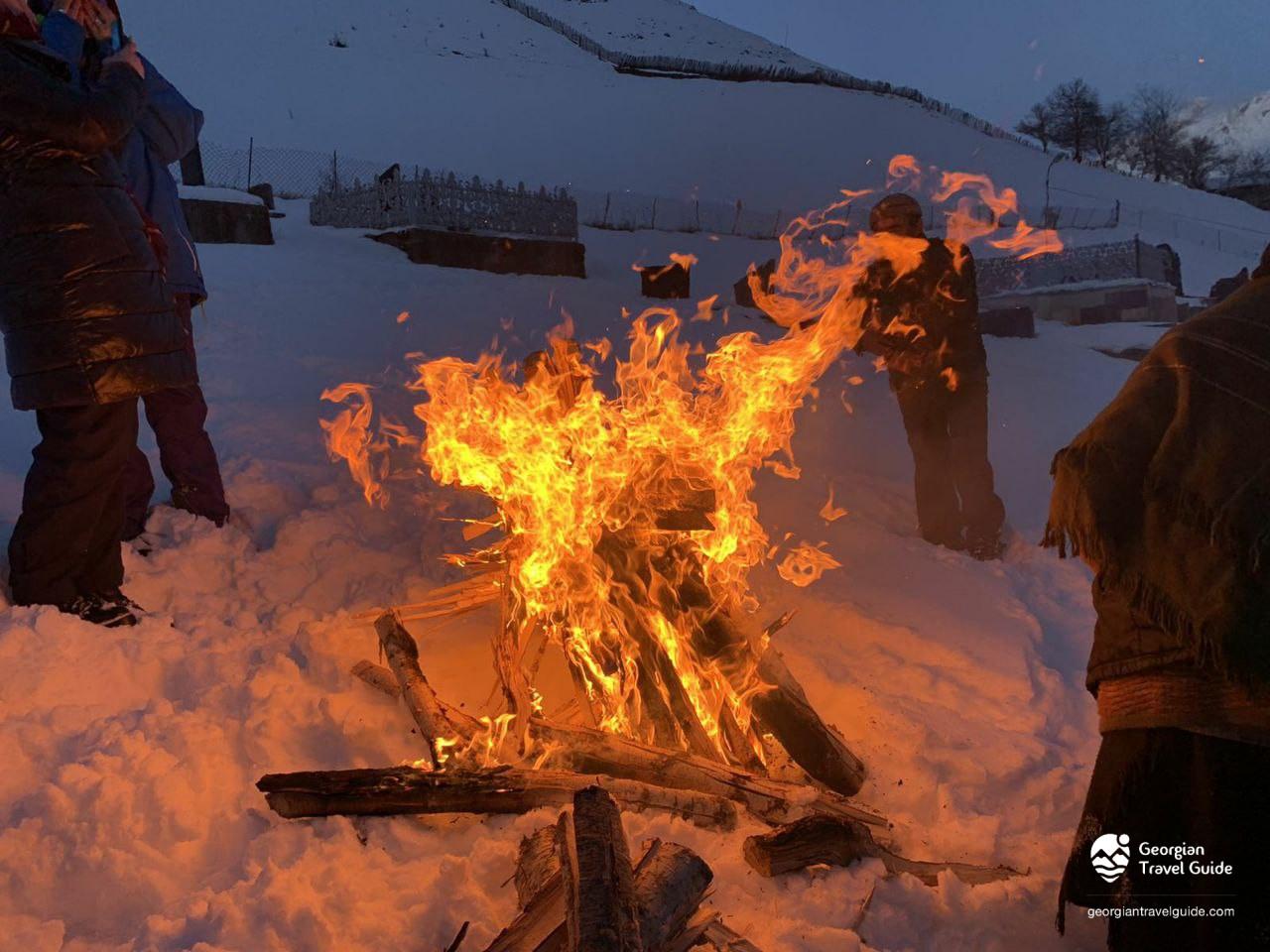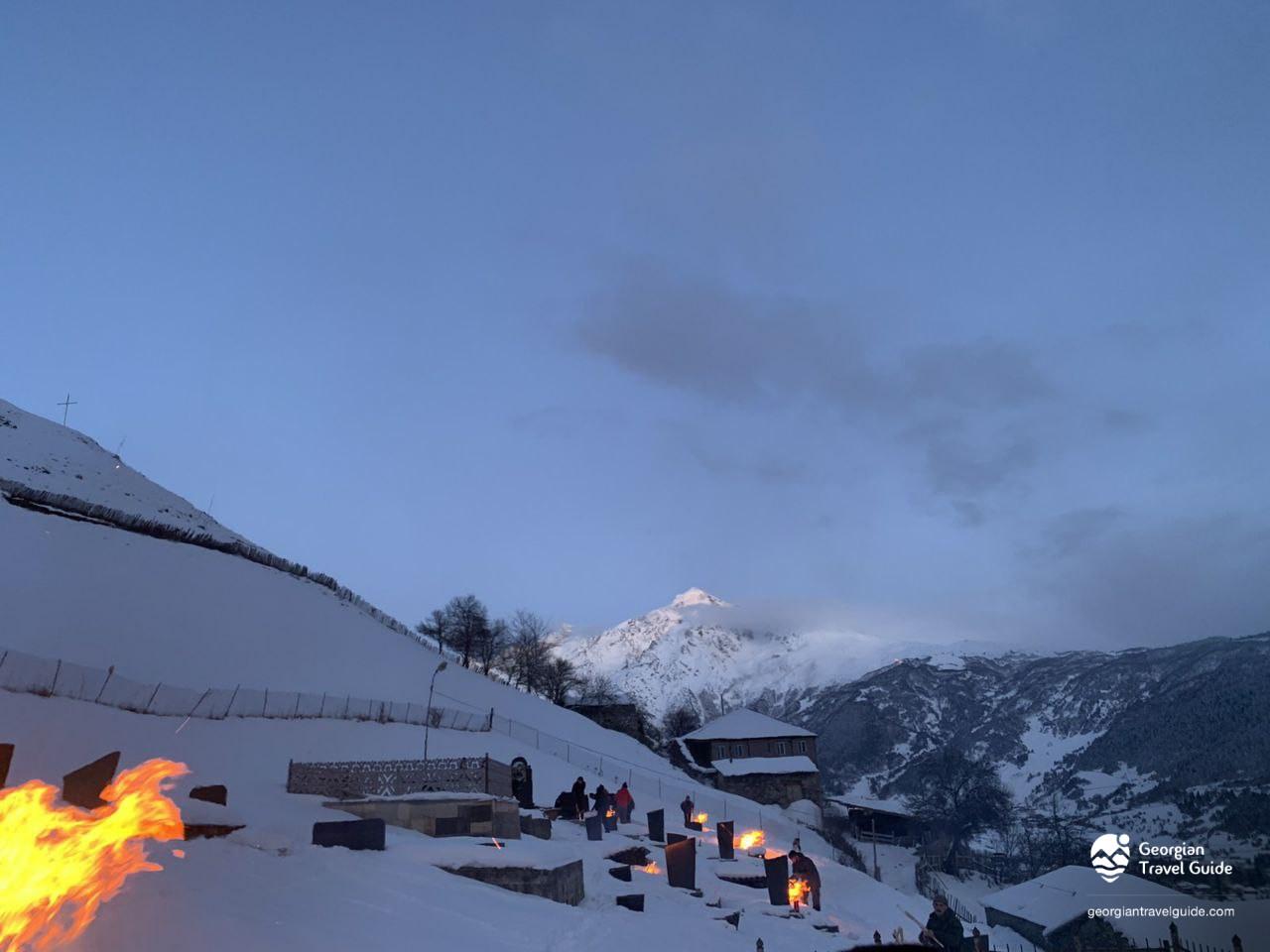
Lamproba
Lamproba (in the Svan language "Limpiari") is an early spring folk festival dedicated to St. George and is held in Svaneti three times a year.
According to the most famous legend, it was held in Svaneti to determine the number of warriors. Based on the lighted torches, people could determine how many Svan warriors could go to the war. According to another version, Lamproba is a typical holiday of the ancient farmers who lit the bonfire in winter to pray for nature awaking, a lot of sunny days, and to make spring come soon. According to the third version, the torches were lit for the lost loved ones, thus warming the souls of ancestors.
How is Lamproba Celebrated?
In ancient times, the festival of Lamproba was mainly held on February 1. But then it has become a moveable holiday. The date of its hold depends on the new moon and almost always coincides with the middle of February. The purpose of the holding of Lamproba was to ask for productivity, cattle, human reproduction, and good weather.
In Lower Svaneti (Kvemo Svaneti), the torch was made from the branches of dried oak, birch, or beech trees, and each family lit one torch for the peace of the male members from the family. The number of lighted torches depended on the number of family members. According to legend, while the thieves chased after Christ, the birch tree dropped its branches and covered him. Christ promised the tree that it would be used during the remembrance of the human soul. That is why Svan make a torch out of birch branches.
In Upper Svaneti (Zemo Svaneti), Lamproba was also called "Svimonoba" which was included in the early spring holidays of the Kviria cycle and was held in a similar way to the Svan version of - Berikaoba-Keenoba: "Caesar", his "wives" and "viziers" were elected. Ritual flatbreads were served in the church of the Archangel in the village of Lakhiri, Mestia Municipality, and a ritual feast was held in Zedashe. People from the church came to the family of "Mesvimnishe", the one who held Svimonoba (Lamproba) and whose turn was to host a community. They sang hymns of praise, were walking around the hearth with lighted candles, which were then stuck against the wall of the cattle stall. They threw snowballs. Wrestling, Perkhuli (Georgian male folk round dance), and Lampruli (Svan Perkhuli) were also held. The next day Lamproba of St. George and St. Mary was held, and later the lamproba of the sky was held. One bunch of torches was dedicated to the name of St. Mary, the other to St. George, and the third for the good of heaven. In Svaneti, Mary is considered to be the patron deity of harvest.
Still, people come to the cemeteries to lit torches in February. The torch is also lit at the grave, near the church. A bunch of branches, that is taken to the grave of lost loved ones, is made from the branches of a birch tree. The branches are added to the one big bonfire, and people pray in the name of St. George and then celebrate the festival. Ivane Javakhishvili has described this ritual:
"On the week of Matthew and the Pharisee Feast, during the service, several villagers of all age go to the church of St. George. Everyone holds lit birch tree branches in their hands. When they arrive at the church, they gather the lit trees and light a big fire. Then people start praying and chanting. After praying, people return home singing and spend the rest of the days singing and playing till Monday. Svans call this day Limpiari, which is equal to Georgian Lamproba."
Nowadays, "Improvised Lamproba" is celebrated in Svaneti for tourists too, to popularize the mountain-skiing resort. Supra (Georgian feast) and the performances of folk ensembles decorated according to local traditions are presented at the event. The event is accompanied by lighted torches, Svan Perkhuli, and traditional hospitality. However, as an exception, due to the situation of the Covid-19 pandemic last year, Lamproba was held without tourists.
Lamproba is spread all over the world. The Crucession with lit torches was originally characteristic of the whole of Christendom. As for lighting torches at the graves, it is a local tradition. The first information about Lamproba is described in "The Georgian Chronicles". According to Ivane Javakhishvili's "History of the Georgian Nation" Lamproba was held all over Georgia, in different parts of the country, especially in the mountains, but over time it remained only here, in Svaneti.
Login
Similar articles









Please login to add a comment
Write a comment